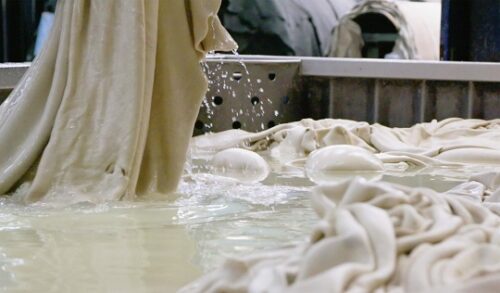22 February 2023
You’ll find many tanneries around the world located near rivers. There’s a good reason for that and it’s called H2O – water. Like various other industries, water is used in many process steps and sourcing directly from rivers was historically the obvious way. Why do we need water to produce leather? Where is all that water used in the leather-making process? And more importantly, what happens to the water afterwards?

Water as the perfect solvent
When we speak about the chemical side of leather production (or chemistry in general), a solvent is a substance that dissolves a solute (a soluble substance). The result is a solution. We make a solution every day when we make a cup of tea or mug of coffee. Even the sugar (or sweetener) you use is technically a chemical that dissolves into your favorite brew.
Solvents are usually liquids, but there are gasses and solids that function as solvents. If we talk about industrial applications, water is usually excluded from the solvent label. The reason is mostly because water has no harmful chemical properties as opposed to other solvents. Water-based is often considered environmentally friendlier, but it’s still a solvent. In fact, water is the universal solvent and the reason for that is… well, chemical.
Without water no leather tanning – to read the rest of this article click on One 4 Leather.
We bring leather, material and fashion businesses together: an opportunity to meet and greet face to face. We bring them from all parts of the world so that they can find fresh partners, discover new customers or suppliers and keep ahead of industry developments.
We organise a number of trade exhibitions which focus on fashion and lifestyle: sectors that are constantly in flux, so visitors and exhibitors alike need to be constantly aware both of the changes around them and those forecast for coming seasons.